Canon Extender EF 1.4x III review: extend your telephoto reach, not your budget
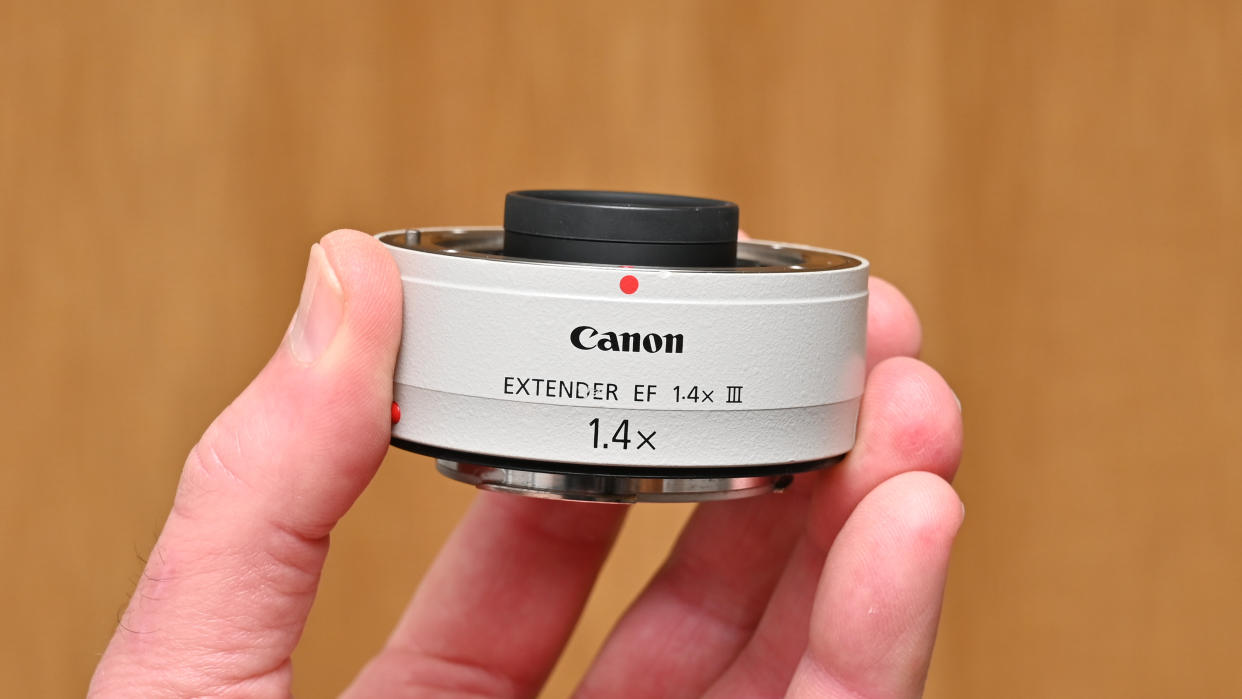
The Mark III edition of this Canon 1.4x Extender, or teleconverter, is the latest (and probably last) in the EF-mount series, designed for Canon cameras and compatible EF-mount Canon telephoto lenses. It’s primarily designed for DSLRs but can also be used on EOS R-system mirrorless cameras via an EF-EOS R mount adapter.
As such, it’s one of the best teleconverters on the market. As a 1.4x teleconverter, the focal length of the attached lens is magnified by a factor of 1.4x, with a 1 f/stop reduction in aperture rating, so a Canon EF 70-200mm f/2.8L IS III USM zoom effectively becomes roughly a 100-280mm f/4 lens.
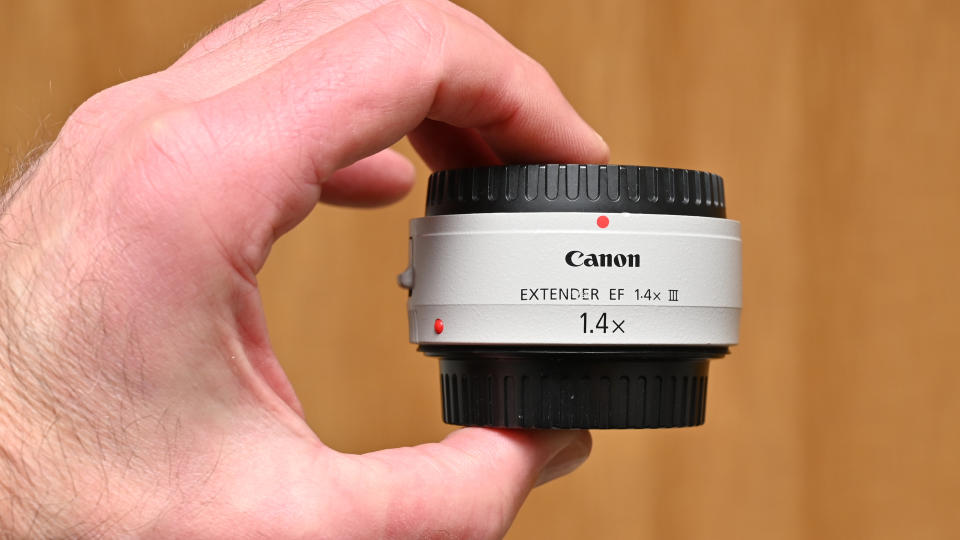
The aperture reduction naturally means you’ll suffer a drop in shutter speeds. In some cases, it can also scupper autofocus. For example, if you use the teleconverter with a Canon EF 100-400mm f/4.5-5.6L IS II USM lens, you’ll need a DSLR that supports autofocus at f/8. Back on the upside, when using the teleconverter, the minimum focus distance of the main lens remains unchanged. You therefore get a 1.4x boost in the maximum magnification ratio, which can work well for extreme close-ups.
Canon Extender EF 1.4x III: What's changed?
Compared with earlier editions, the Mark III features a completely redesigned optical path and a tougher, weather-sealed construction with a new lock release mechanism. It also features an integrated microprocessor for enhanced data communication between the main lens and host camera body.
Canon Extender EF 1.4x III: Specifications
Canon Extender EF 1.4x III: Price & Availability
Priced at $429 / £459 / AU$749, the Canon Extender EF 1.4x III certainly isn’t cheap for a teleconverter but it’s good value considering the features and build quality. It’s actually slightly less expensive than the rival Nikon AF-S TC-14E III for Nikon DSLRs and the newer Canon Extender RF 1.4x for EOS R-system cameras, the latter retailing for around $499 / £579 / AU$899. Originally launched back in 2010, the teleconverter has been widely available for more than a decade.
Canon Extender EF 1.4x III: Design & Handling
I like that the Canon Extender EF 1.4x III is of pancake lens proportions, measuring just over an inch thick. It’s also very lightweight at 190g. That’s just a tiny fraction of the size and weight of carrying around an extra telephoto or super-telephoto lens. From a handling perspective, I can add this teleconverter between a camera body and lens and hardly notice any difference in overall size and weight.
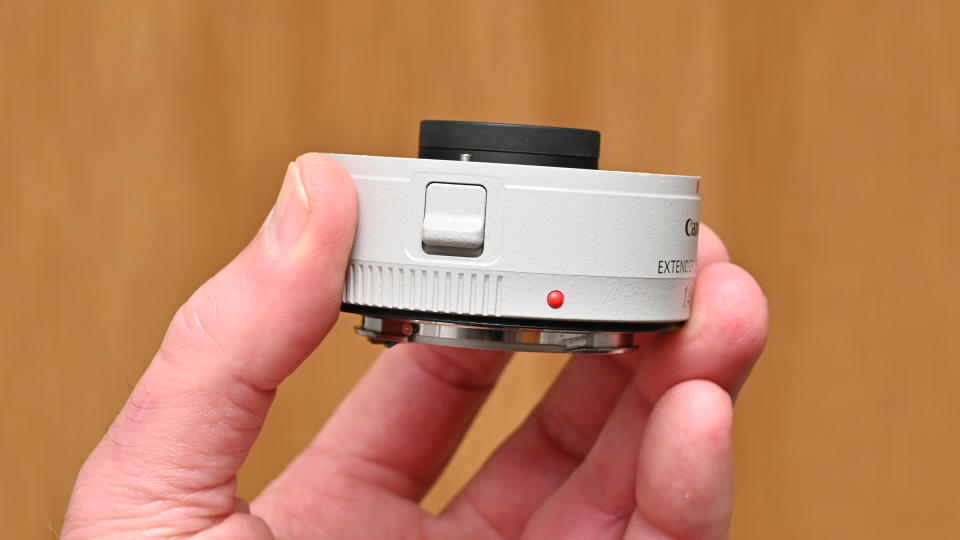
Although lightweight, build quality feels very solid and robust. That’s an important point if you’re mounting a big, heavyweight lens to it, like the Canon EF 400mm f/2.8L IS III USM that I used during testing, which weighs in at a comparatively massive 2,840g. As well as being upgraded for greater durability and featuring weather seals, I like the new fluorine coatings on the front and rear elements, to repel moisture and grease and make the surfaces easier to clean.
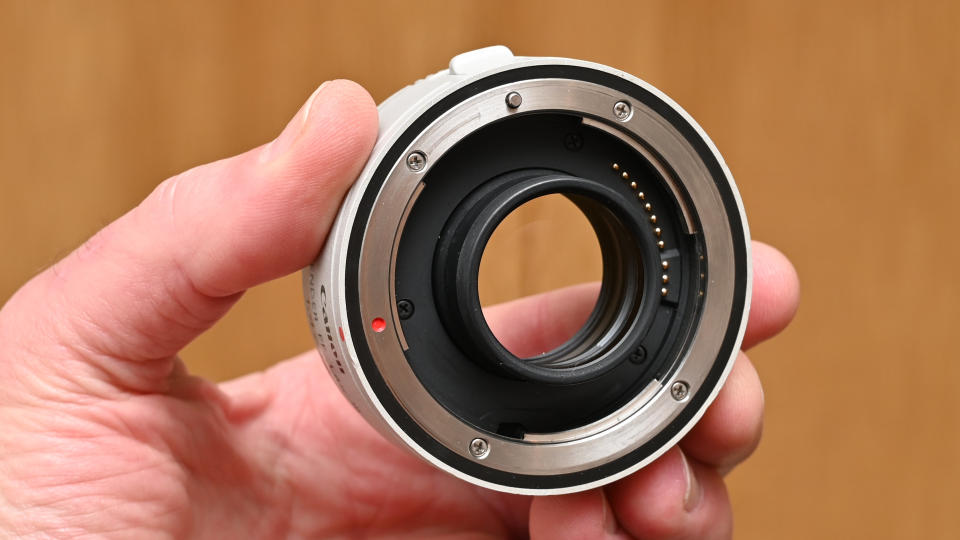
There are no less than 7 optical elements shoehorned into the small build, arranged in 4 groups. The optical design is completely new, compared with previous versions, while the built-in processor enhances electronic communication between the main lens and the host camera body.
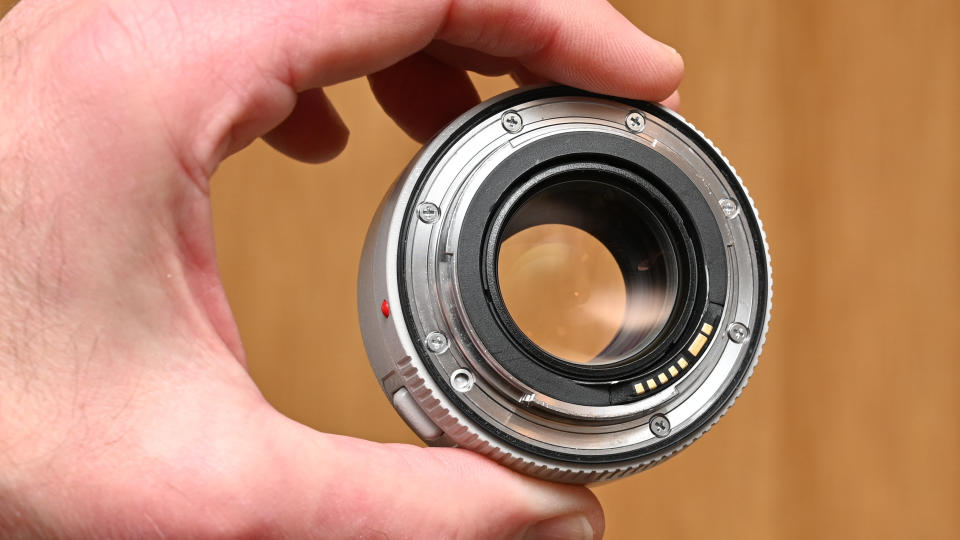
As with almost all teleconverters, the Canon Extender EF 1.4x III has a protruding inner section at the front, which extends into a cavity at the rear of the main lens. It’s important to note that not all telephotos have enough clearance between the rear element, so you need to be careful not to try to mount an incompatible lens. Suffice it to say that the teleconverter is compatible with most Canon L-series telephoto prime and zoom lenses.
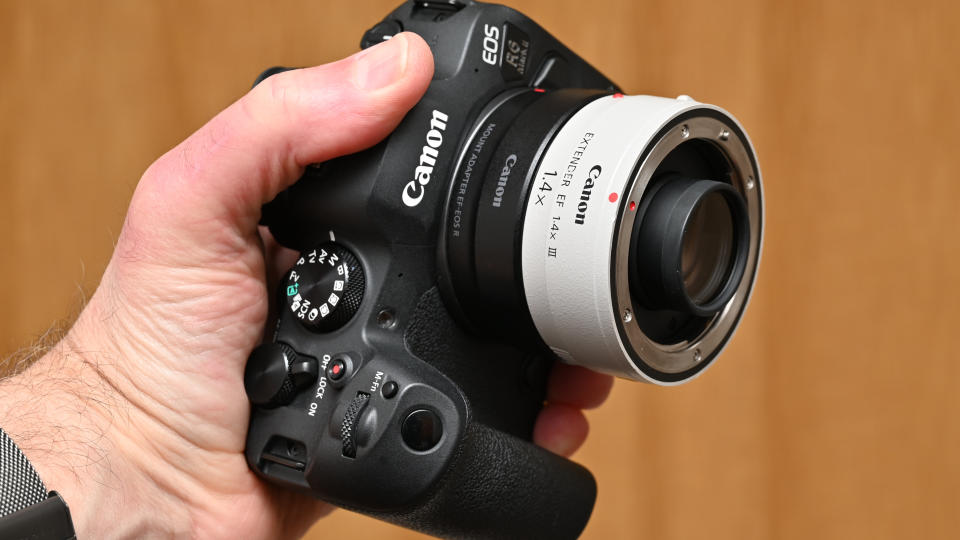
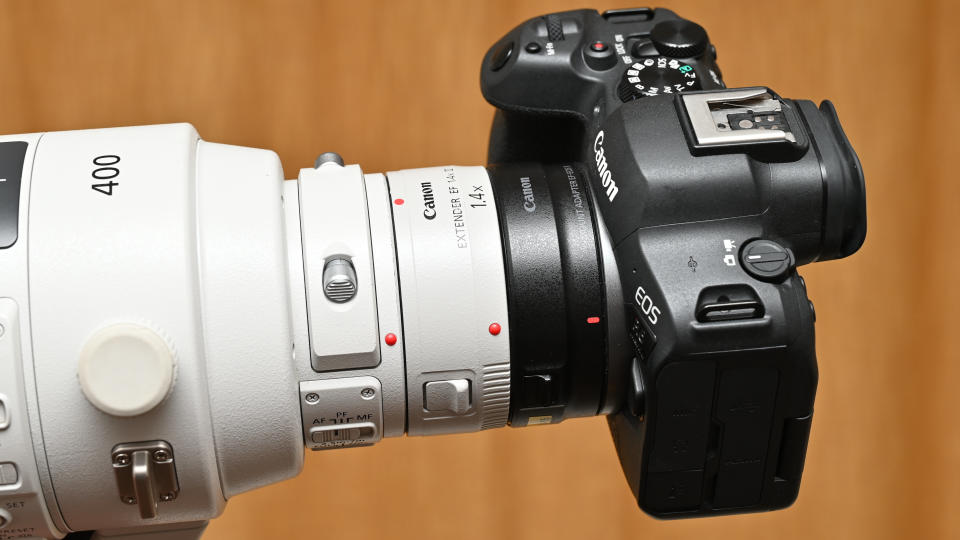
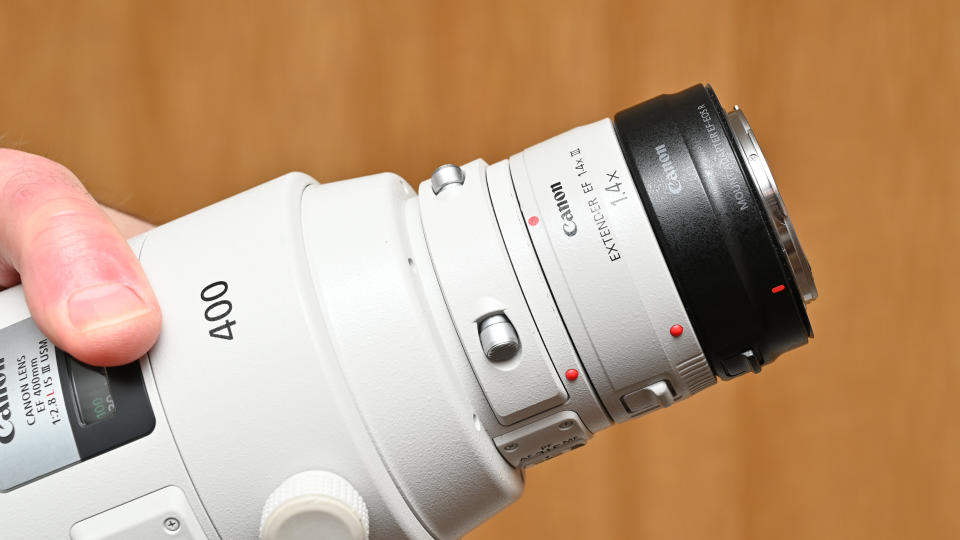
Canon Extender EF 1.4x III: Photo Performance
Question marks normally hang over teleconverters when it comes to performance, compared with using a bigger lens fitted directly to the camera body. Any teleconverter acts rather like a glorified magnifying glass, enlarging the central area of the image circle produced by the main lens and passing it through to the camera. On the plus side, you’re only effectively using the central region of the image circle, where quality is typically best. However, a teleconverter will also draw more attention to any flaw or failure. Autofocus speed can also take a hit, along with the effectiveness of optical IS (Image Stabilization).
I tested this teleconverter with a high-performance Canon EF 400mm f/2.8L IS III USM and a Canon EOS R6 Mark II camera body via an EF-EOS R mount adapter. No doubt thanks to the built-in processor featured in the teleconverter, I found that autofocus speed and image stabilization were largely unaffected.
I’d expect a bit of a drop in outright sharpness when using a 1.4x teleconverter and the Canon is no exception. Even so, it performs well for its type and images retain good levels of sharpness across the entire image frame. Any increase in color fringing is entirely negligible and, with the 400mm lens, I found a swing from minimal pincushion distortion to slight barrel distortion.
Canon Extender EF 1.4x III: Sample Images
For the sake of comparison, the following gallery includes a series of shots taken with a Canon EOS R6 Mark II (with EF-EOS R mount adapter) and a Canon EF 400mm f/2.8L IS III USM on its own, as well as with both a Canon Extender EF 1.4x III and a Canon Extender EF 2x III. This shows differences between using the lens natively, as well as with the 1.4x and 2x teleconverters.
The first sequence was taken from a viewpoint overlooking the city of Bath, UK, from a distance of half a mile, on an overcast morning. Due to deteriorating weather conditions with strong winds and heavy rain, the subsequent shots were taken indoors with bounced flash.
All of the example images were taken using a sturdy tripod and exposure delay mode and shot several times to ensure the consistency of results. As per our usual testing regime, all of these images were taken in addition to the lab-test shots that we captured, based on the use of official test charts.



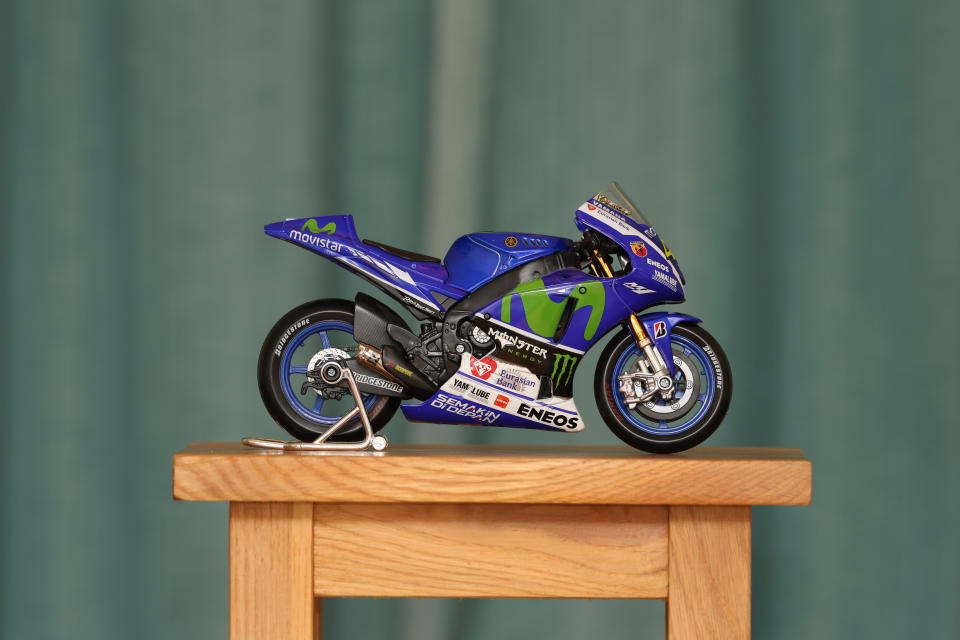











Canon Extender EF 1.4x III: Lab Results
We run a range of lab tests under controlled conditions, using the Imatest Master testing suite. Photos of test charts are taken across the range of apertures and zooms (where available), then analyzed for sharpness, distortion and chromatic aberrations.
We use Imatest SFR (spatial frequency response) charts and analysis software to plot lens resolution at the center of the image frame, corners and mid-point distances, across the range of aperture settings and, with zoom lenses, at four different focal lengths. The tests also measure distortion and color fringing (chromatic aberration).
Sharpness:


Sharpness remains very good when using the teleconverter, and is very consistent across the entire image frame.
Fringing:

There’s an almost imperceptible increase in color fringing, compared with using the main lens on its own, from the center of the image frame to the extreme edges and corners.
Distortion: -0.72
Whereas the 400mm produces slight pincushion distortion, this swaps to mild barrel distortion when using the teleconverter.
Canon Extender EF 1.4x III: Verdict
Much as I love lenses, top-quality super-telephoto primes and zooms are horrifically expensive to buy. They’re also real heavyweights that are literally a pain to carry around. The Canon Extender EF 1.4x III gives a useful boost in telephoto reach at comparatively little expense. And being just over an inch thick and weighing only 225g, you can add it to your bag of camera gear without even noticing the difference. There’s very little drop in the performance of the main lens, in terms of autofocus speed, image stabilization, and image quality, making the teleconverter a smart buy.

Should you buy the Canon Extender EF 1.4x III?
✅ Buy this...
Adds telephoto reach
Vastly cheaper than an additional lens
Solid build and performance
🚫 Don't buy this...
Takes an f/stop off the main lens
Not compatible with all lenses
Slight drop in performance of main lens
Alternatives

The Canon Extender EF 2x III gives 2x magnification rather than 1.4x, so it’s more powerful but bigger and heavier, and you lose two f/stops in aperture instead of just one stop.

If you use an EOS R-system camera, the Canon Extender RF 1.4x is the native equivalent for mirrorless camera bodies and compatible RF-mount telephoto lenses.

